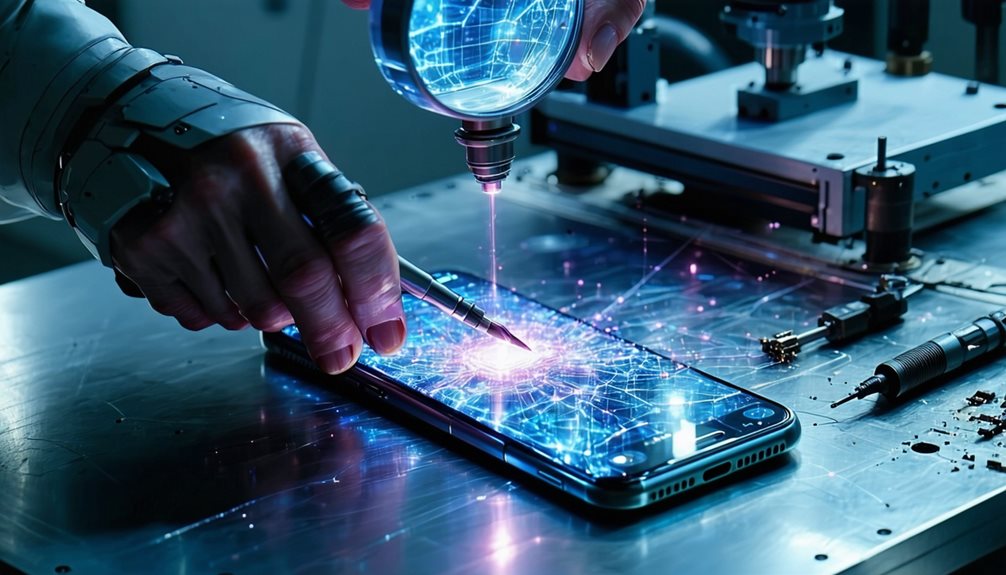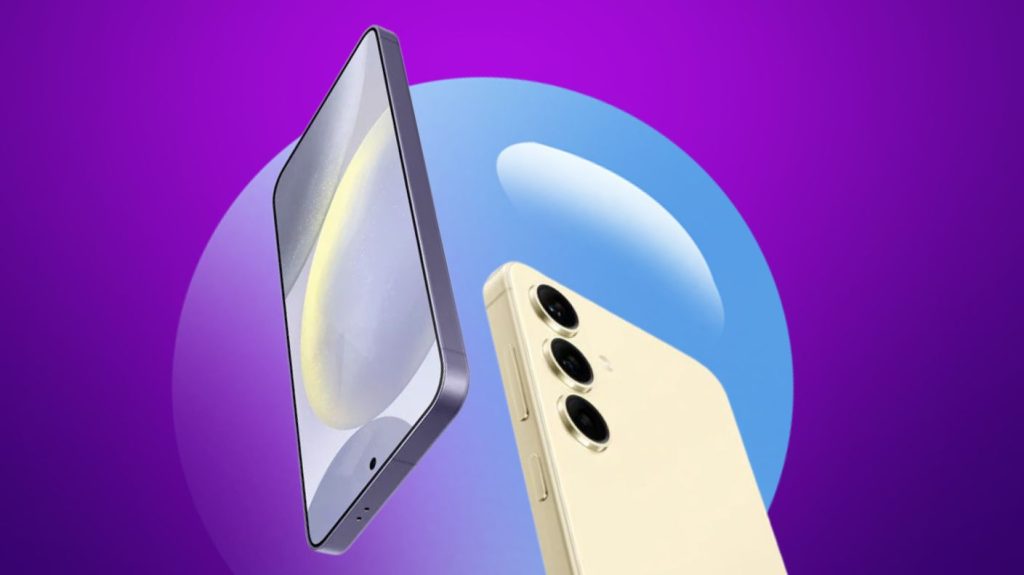Imagine dealing with a cracked smartphone screen or a battery that simply refuses to hold charge. By 2025, you’ll have access to revolutionary tools and techniques set to transform the repair landscape. AI-driven diagnostics and augmented reality interfaces are at the forefront, making repairs not only more intuitive but also efficient.
Picture this: modular designs and self-healing materials might soon be common, reducing how often and how complex these fixes need to be. But what do these advancements mean for your choice between DIY and professional repair? Let’s delve into how these innovations could impact you and your devices.
Consider this: with AI and augmented reality, it’s like having a tech guru in your pocket. These tools guide you step-by-step, making the process less daunting. Imagine a holographic assistant pointing out which component to tweak or replace. It’s almost like a video game tutorial, minus the extra lives.
On the other hand, modular designs mean devices are like Lego sets—pieces can be swapped out easily. And with self-healing materials, your phone might just fix itself, akin to a superhero regenerating.
So, how do you decide whether to go it alone or call in the experts? Think of it like cooking. Some dishes are easy enough to whip up at home, while others are best left to the chefs.
DIY repairs, with all these new tools, are becoming more like making a sandwich rather than a soufflé. However, if you prefer not to risk it, professionals are still your safe bet. Just remember, the decision hinges on your comfort level and the complexity of the repair.
Essential Tools for Mobile Phone Repair: Your 2024 Toolkit

Choosing the right tools for phone repairs can make all the difference in your success. You’ll want to contemplate specialised tools like precision screwdrivers and a soldering iron for tricky repairs, but don’t overlook everyday items like a plastic card for prying open casings. Knowing what works and what doesn’t will save you time and prevent unnecessary damage to your device.
Tips for Choosing the Perfect Tools for Phone Repairs
Equipping yourself with the right tools is essential for mastering mobile phone repairs. Start with a diverse screwdriver set, the necessary tools for handling various screws without damage. A voltage tester multimetre is a proper tool for initial assessments. Include a soldering iron and solder wire for precise repairs. Pry tools are essential for safe device opening. These essential tools and techniques guarantee high-quality repairs that meet professional standards.
Top Specialised Tools for DIY Phone Repair
Mastering mobile phone repairs requires more than just basic tools; having specialised equipment can make the process smoother and more efficient. Equip yourself with precision screwdriver kits for diverse screws, solder wire and a soldering iron for circuit connections, and a voltage tester multimeter for diagnostics. Pry tools protect components while opening devices. These tools, combined with effective repair techniques and replacement parts, guarantee successful mobile screen repairs.
Using Everyday Tools for Phone Repairs: What Works and What Doesn’t
When tackling smartphone repairs, it’s tempting to rely on everyday tools from around the house, but not everything in your drawer is suited for the task. Mastering successful repairs requires the right repair tool and tools and knowledge. Tools like precision screwdrivers and pry tools make disassembling your phone, troubleshooting, and repair much easier, especially for screen repair techniques.
- Precision screwdrivers
- Pry tools
- Solder wire
- Voltage tester multimeter
- Soldering iron
Screen Repair and Replacement: A Step-by-Step Guide

When you’re faced with a cracked phone screen, it’s essential to understand the latest screen replacement techniques that prioritise efficiency and minimal damage to your device. You’ll want to decide whether to tackle the repair yourself or hire a professional, considering the complexity and the tools required. By following a clear step-by-step guide, you can assess your comfort level with DIY repairs or determine if a pro’s expertise is necessary.
How to Fix a Cracked Phone Screen in 2024
Tackling a cracked phone screen in 2024 can seem intimidating, but with the right tools and steps, you’re well-equipped to handle it yourself. Begin with a guide to mobile phone repair, where tools are essential for a step-by-step repair. Carefully remove the back cover and follow these steps:
- Warm edges with heat gun
- Lift with suction cup
- Disconnect battery
- Replace the screen
- Reassemble and test
Understanding Screen Replacement Techniques
Screen replacement is a fundamental skill in smartphone repair, requiring precision and care. Start by powering off and disconnecting the old battery. Use a heat gun or hair drier to soften adhesive, then employ plastic pry tools to detach the screen. After cleaning the frame, install the replacement screen. Confirm all connectors are secure, test functionality, and finally, apply a screen protector to finish repairing your phone.
Should You DIY or Hire a Pro for Screen Repair?
Deciding whether to DIY or hire a professional for a screen repair hinges on several key factors, including your confidence and expertise in handling delicate electronics. Evaluating your skills and the complexity of the repair is essential. Consider these:
- Access to specialised parts and tools is important.
- Innovations in repair techniques can aid your process.
- Common issues may need a repair technician.
- DIY repairs offer empowerment.
- Seek professional help for peace of mind.
2024 Innovations in Mobile Phone Repair Techniques

In 2025, you’ll find smartphone repair techniques have evolved with exciting innovations that emphasise DIY approaches and cutting-edge methods. AI-driven diagnostics and augmented reality tools are making it easier for you to troubleshoot and fix your device at home. Additionally, modular designs and self-healing materials are transforming phone repairs, allowing for quicker part replacements and automatic damage recovery.
Emerging Trends in DIY Mobile Repair
As we move into 2025, DIY mobile repair is becoming more accessible and efficient thanks to four groundbreaking innovations. AI diagnostics and augmented reality streamline your repairs, providing precision and guidance. Modular phone designs and self-healing materials enhance repairability and longevity. Online communities offer repair tutorials and support, empowering you to master smartphone components and DIY repairs.
- AI diagnostics
- Augmented reality
- Modular phone designs
- Self-healing materials
- Online communities
Cutting-Edge Techniques for Modern Phone Repairs
Today’s smartphone repair landscape is revolutionising, thanks to cutting-edge techniques that boost efficiency and sustainability. As a proficient mobile phone repair technician, you’ll leverage AI Diagnostic Tools for rapid issue detection and AR Instructions for precise repairs. Modular Components simplify phone component replacements, like charging port repair, while 3D Printing for Parts allows you to create hard-to-find components, making simple repairs quicker and more efficient.
Fixing Common Phone Repair Issues: A Troubleshooting Guide

In 2025, tackling common phone repair issues like cracked screens, battery problems, and software glitches is more accessible with the right approach. You’ll find that using repair software for diagnostics can pinpoint issues quickly, while tools like a pry tool or voltage tester multimeter aid in hands-on repairs. Whether you’re a seasoned technician or trying a DIY fix, these tips guarantee a successful repair and extend your phone’s lifespan.
How to Identify and Fix Common Phone Repair Problems
Many smartphone repair issues can be quickly identified and resolved with the right tools and techniques. To fix common phone repair problems, start with these steps:
- Use prising tools to open a Samsung and inspect the damaged screen.
- Replace an old battery carefully.
- Attach the new screen using techniques in our beginner’s guide.
- Discover essential tools and techniques for efficient repairs.
- Regularly maintain all components.
Using Repair Software for Diagnostics
Repair software has revolutionised how we diagnose smartphone issues, making the process quicker and more accurate. By leveraging automated diagnostics, you can efficiently analyse device logs and performance metrics. This allows you to pinpoint problems and predict hardware failures with ease. Advanced algorithms provide step-by-step troubleshooting, ensuring you tackle connectivity and software glitches swiftly. Mastering these tools means you’ll excel in smartphone repairs.
Tips for a Successful DIY Repair
Having mastered repair software for diagnostics, you’re ready to tackle common smartphone issues yourself. Use this beginner’s guide to mobile phone repairs to make troubleshooting and repair much easier:
- Assess damage with a voltage tester before you lift the screen.
- Utilise screwdrivers for different phone models, especially iPhone repairs.
- Dealing with a cracked screen? Carefully separate the screen.
- New battery installation: verify correct placement.
- Organise parts for smooth reassembly.
DIY or Professional Repair? Making the Right Choice

When your smartphone breaks, you need to decide whether to fix it yourself or hire a pro. If the repair involves complex tasks like internal component replacement, professional services might be necessary to guarantee quality and warranty. However, DIY repairs can be cost-effective if you’re confident in your skills and have the right tools on hand.
When Professional Repair Services Are Necessary
Many smartphone issues are best left to professional repair services, especially when dealing with complex problems like motherboard damage or intricate component failures. To become a proficient mobile phone user, recognise when repairs might require expert handling:
- Remove an old battery from the motherboard.
- Use a heat gun on the phone’s screen specific to your phone model.
- Verify repairs include precise reassembly.
- Protect mobile devices under warranty.
- Diagnose with specialised tools.
Weighing the Costs: Professional Repair vs. DIY
Understanding when to seek professional repair services is just one part of the equation; evaluating the costs of professional repair versus DIY is equally important. If you’re new to phone repair, replacing a phone’s screen using precise tools guarantees quality. Professionals offer warranties, reducing risks. DIY might save money initially, but if you incorrectly attach the new screen, it could lead to higher costs for professional intervention later.
Final Thoughts
By 2025, fixing your smartphone will be a walk in the park. Imagine having an AI assistant that diagnoses issues and augmented reality guides that lead you through repairs as if you had a tech-savvy mate by your side. If your phone’s a Lego set, modular designs let you swap out parts in a jiffy. And with self-healing materials, you might find your device needs fewer repairs in the first place. Whether you’re a DIY enthusiast or prefer professional help, these innovations make maintaining your smartphone as easy as pie. Embrace these tools and techniques to keep your device in top shape with minimal fuss.
But for those trickier repairs or when you want it done right the first time, there’s no substitute for a professional mobile phone repairer. They’ll have the skills and tools to handle even the most advanced tech, ensuring your device stays reliable and hassle-free. Skip the guesswork—choose a pro for peace of mind!







